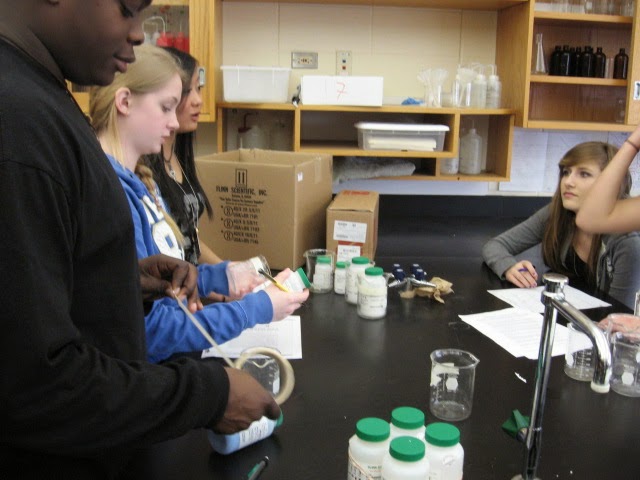IEARN and the Collaborative Effort to Feed the Hungry
By Greg Reiva
As long as I can remember students in my science classes have
always sought the attention that goes along with making friends, being a part
of a group or a club and expressing what they believe in as individuals. This is what young people do as they build
their self-confidence, become more autonomous and expressing the values of what
they believe in.
For high school students these relationships between peers
dominate their lives and it defines the environment in school. Sometimes, it is these relationships, alone,
that are the prime determinant as to whether students are motivated in school
and decide if they participate or not in the learning going on while in class. Their
connections to friends or networks of interesting people have never played a
more dramatic influence in the lives of youth than it does today with access to
multiple sources of technology and many avenues of social media.
I got involved with the iEARN
System (International
Education and Resource Network) as a means to tap into students’
natural tendencies to explore and foster new relationships. As an educator I find that providing the
opportunity for students to collaborate and to solve real-world problems is the
most meaningful thing that a teacher can offer to students. The
iEARN System delivers a world of needed opportunities for students and it
lends to the development of many important personal attributes such as openness to new ideas, effective
communication skills, critical thinking skills, creativity and intellectual
curiosity. At the core of student
performance is their intrinsic motivation to learn. It is based upon factors such as challenging
curriculum, goal oriented achievement, positive feedback, opportunities to try
and fail and try again and taking the opportunity to showcase their results to
their peers, teachers and members of the community.
The Hunger Project, facilitated by
Larry Levine of Kidscanmakeadifference.org and embraced by teacher Marzieh Abedi
and her high school Hunger Warriors students
of Tehran, Iran are examples of a collaborative process where students are
motivated to solve problems. Sophomore
female students in my physical science classes, at Streamwood High School,
collaborated with seven Iranian students in a joint mission to raise awareness
and help fight hunger in their communities. The goal is to take action helping
to alleviate some of the problems that prevent families from gaining access to
proper nutrition. It is a noble effort
by the students and it awakens their intrinsic motivation to want to work
toward making a difference in peoples’ lives in their own community.
Students in Iran designed and
implemented a food festival that provided community members the opportunity to learn
about the issue of hunger becoming involved in the purchase of home-made food
items. This contributes to helping solve
the problem of hunger in Tehran by getting members of the community active in a
united effort. At the same time students
at Streamwood High School continue to grow healthy
herbs and vegetables in the science classroom. This nutrient-rich organic
produce will be sold at a farmers market.
Money earned will be donated to the community local food shelf. These students have spent time and effort
researching and experimenting to solve the problem of growing sustainable
organic herbs and vegetables. They have discovered that urban farming is
a viable solution to the problem of reducing hunger in their community. These innovative groups of students from
opposite sides of the planet share the
same goals and they hold common
values with respect to their commitment to helping people. This collaborative effort of sharing ideas,
resources, and providing effort to reach each other’s goals is part of a noble
experiment that I call Earth
Stewardship.
During the food festival in
Tehran the Iranian students shared with their peers the ideas, pictures and
brochure designed by the collaborating Americans. The Americans are utilizing the ideas and food
festival format, designed by the Iranians, to create their own food festival in
Streamwood and showcase their organic farm produce for the community. The ideas and friendships developed during
the project flow freely between each country and it is a heart-warming
experience for students to connect with peers across the world on such
important issues like hunger.
Long-term sustained efforts by
students, working on projects related to hunger, environmental pollution or
social awareness, are now defining what learning is in the 21st
century. Educational environments
dictated by content and test-driven means of learning are being rejected and replaced
by project-based models of learning.
The Next
Generation Science Standards and the Common Core Curriculum are
setting the stage for the emergence of performance-based educational
methodologies. World-wide these new and
innovative means, designed to deliver learning opportunities for our children,
are taking hold and reshaping how we define what is now considered excellence
in the classroom.
This new way of learning
challenges traditional held beliefs of how students learn. It redesigns the classroom experience and
ignites the intellectual curiosity of the entire learning community. Rigor and relevance in the classroom looks
more like problem-solving challenges and collaborative experience with students
from throughout the world.
Delivering rigor and relevance to
our students in our schools is being achieved by the collaborative and
problem-solving nature of projects-based learning. This is the beginning of an educational
renaissance that is sweeping the planet.
Throughout the world teachers and students are embracing international
collaboration to help students develop relationships, connect with peers, share experiences
and work toward making a better life for everyone on the Earth.



.JPG)

.JPG)



